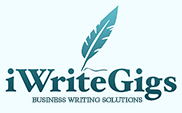Navigation » List of Schools » Glendale Community College » Economics » Econ 101 – Microeconomics » Fall 2022 » Production and Costs of the Firm Quiz
Question #1
A replaces unskilled labor with automated machinery.
B retrains Joe the welder as a painter and Pat the painter as a welder.
C buys extra machines for its workers to use.
D allows fixed cost to become variable.
Question #2
A costs per unit decline as output expands.
B costs fall as the size of the product is increased.
C firms always make handsome profits.
D the government feels responsible for breaking up the firm.
Question #3
A electricity
B mortgage on the building
C worker bonuses
D steel to produce refrigerators
Question #4
A change in total cost resulting from the production of one more unit of output.
B difference between total cost and total expenditure.
C difference between total fixed cost and total variable cost.
D change in total cost resulting from the purchase of one more unit of the variable input.
Question #5
A constant returns to scale.
B increasing costs per unit of output.
C increasing returns to scale.
D decreasing returns to scale.
Question #6
A rising total product.
B spreading fixed costs over larger outputs and increasing returns to the variable inputs.
C falling fixed costs.
D declining administrative costs as output increases.
Question #7
A there are increasing returns to scale in the airline industry.
B airlines are experiencing decreasing returns to scale.
C the airline industry has constant returns to scale.
D the larger airlines are not profitable.
Question #8
A output.
B marginal physical product times output.
C total revenue product.
D total consumer’s surplus.
Question #9
A declines as output increases.
B remains constant even if the firm shuts down.
C is always zero.
D increases as output increases.
Question #10
A jet fuel
B property taxes
C insurance
D rent of airport space
Question #11
A depends on the firm’s planning horizon.
B All of these are correct.
C is a composite of short-run AC curves.
D shows the lowest possible short-run AC corresponding to each output level.
Question #12
A large firms have a concentration of economic power.
B large firms are less-efficient producers.
C many smaller firms would be less-efficient producers.
D there is no economic reason to break up large firms that may have some control over the market.
Question #13
A the firm can maximize its output by operating at the point of minimum long-run average cost.
B it must have increasing returns to scale at low levels of production and decreasing returns to scale at high levels of production.
C it must have increasing returns to each input at low levels of production and decreasing returns to each input at high levels of production.
D its fixed cost rises as output rises.
Question #14
A buy more of the higher priced input and less of the lower priced input.
B reduce its output.
C change its input mix so that the marginal physical product of the input whose price has risen falls and the marginal physical product of the other input rises.
D buy less of that input and more of the other input.
Question #15
A producer should expand the use of that input.
B price of the input will automatically rise in a free market.
C producer should reduce the use of that input.
D marginal physical product of that input must be below its average physical product.
Question #16
A how much the last input added to the total amount of revenue.
B at what point to stop adding inputs to the production process.
C how much profit will be made at each level of production.
D how much the last input added to the total amount of production.
Question #17
A input quantity and output price.
B output quantity and output price.
C input quantity and input price.
D output quantity and input price.
Question #18
A diminishing returns to labor.
B decreasing short-run average variable cost.
C increasing long-run average cost.
D decreasing returns to scale.




